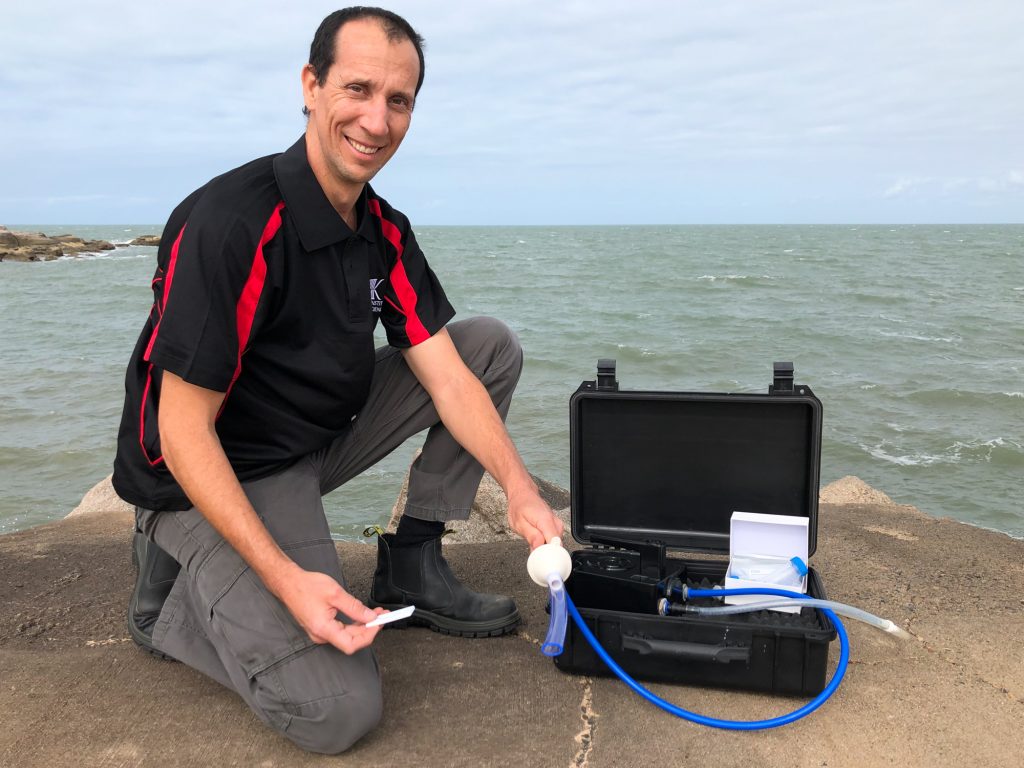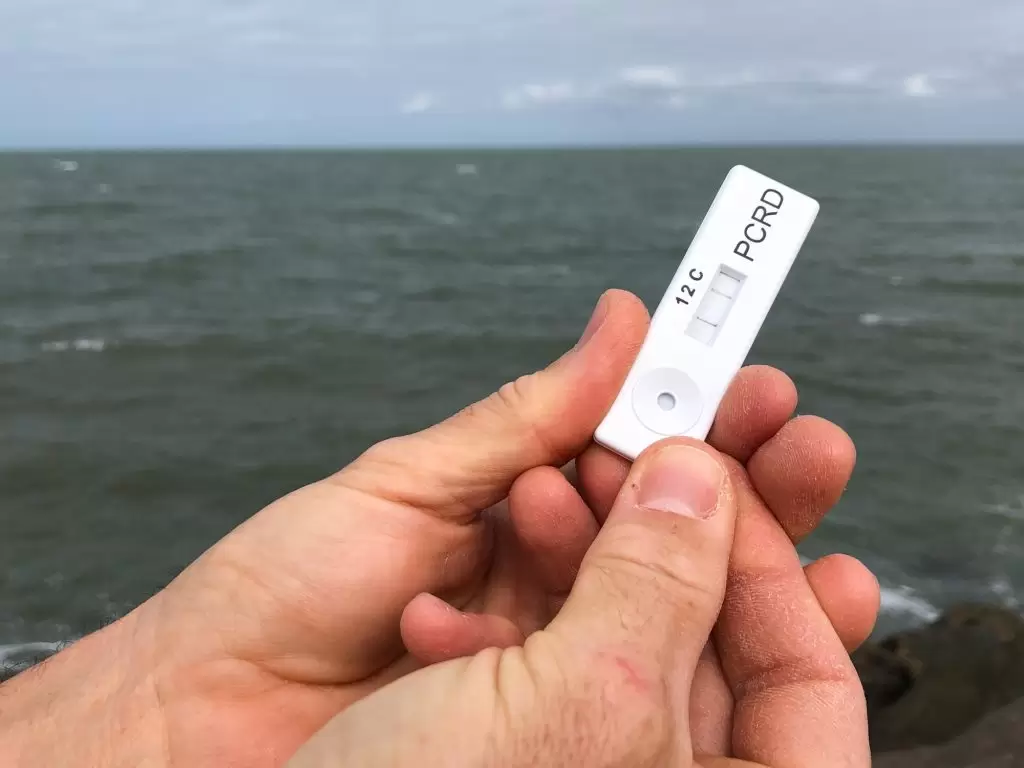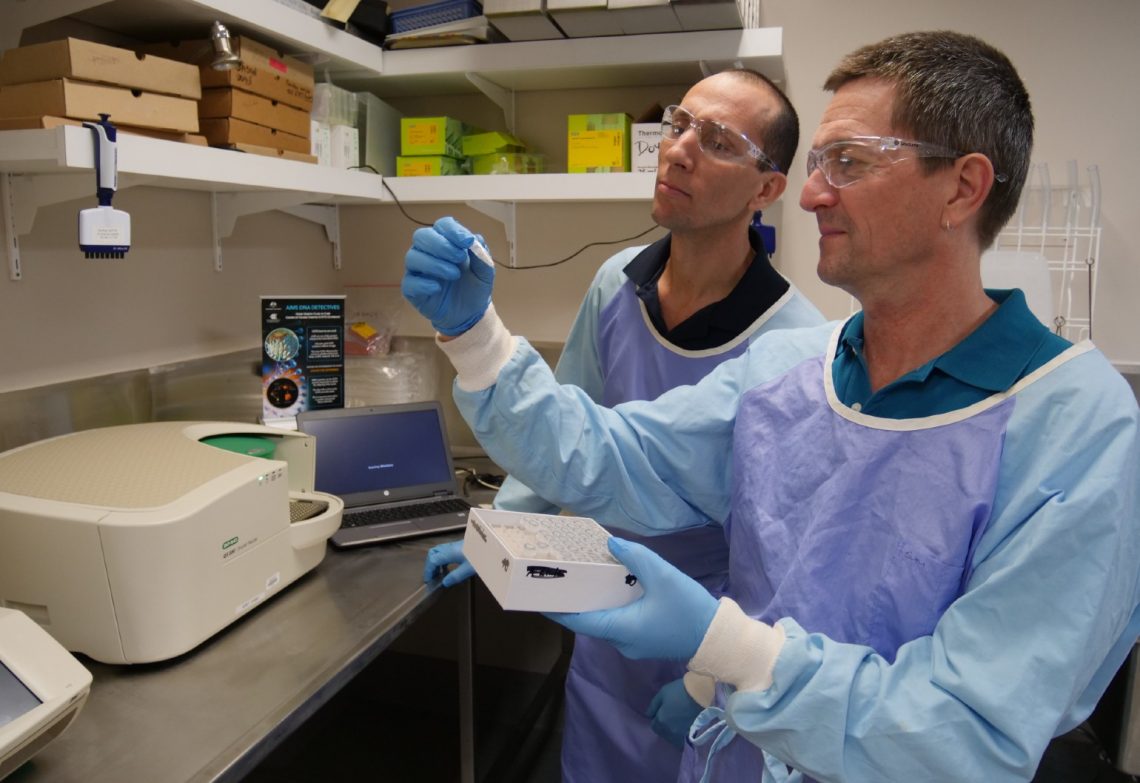The dipstick technology made famous by pregnancy and rapid antigen tests is now being used to detect and monitor starfish populations in the Great Barrier Reef. It’s one of a few innovations being implemented by the Australian Institute of Marine Science (AIMS) to monitor activity in the nation’s coral reefs.
They’ve become part and parcel of our daily lives – the thin, white testing devices that come out any time there’s a cough or a sore throat.
But detecting a COVID-19 infection or pregnancy aren’t the only possible implementations of the dipstick assessment technology.
AIMS researchers have taken the dipstick, already in common use in marine science circles, and applied it to the detection of crown-of-thorns starfish, or CoTS, in the barrier reef.
The project is just one initiative from AIMS, which is currently developing a new marine monitoring system known as ReefScan.
A natural threat
By combining the dipstick technology used in take-home pregnancy tests and RATs with eDNA testing, AIMS researchers are now able to detect the presence of crown-of-thorns starfish without the need for visual surveys.
Measuring the abundance of eDNA – or DNA shed into the surrounding environment – provides an improved assessment of CoTS populations, which is valuable for one key reason: they’re a threat to coral.

“CoTS is an animal that eats coral – that’s its food source,” said Jason Doyle, the biochemist who developed the innovation at AIMS.
Being native to the Great Barrier Reef, the starfish isn’t a pest or an invasive species, but in large numbers it still presents a risk to coral colonies.
“There have been four recorded outbreaks of crown-of-thorns starfish since the 1960s,” said Doyle. “Each outbreak goes for roughly 12 to 15 years, typically starting in the north and heading south. The jury is still out as to why these outbreaks occur and whether they are human-induced or a natural phenomenon.”
So where does the dipstick technology come in?
Traditional methods of monitoring involve a human diver conducting a visual observation while being pulled along behind a boat, a process called manta towing.
“That’s all very well and has a purpose,” Doyle said. “You cover a lot of ground very quickly.” But a major drawback of this method is the inability to detect CoTS that are unobservable from above, such as those on the underside of coral, or when CoTS are present in low density populations.
A dipstick analysis of its eDNA, however, enables researchers to detect CoTS in real time, rather than kilometres away at a lab, thereby upping the accuracy of population estimates.
“We take a water sample, filter it through a fine micron membrane and extract the DNA,” he said. “If the sample contains CoTS DNA, we amplify that to a point where we can apply it to one of our dipsticks.”
From there, it’s a simple matter of identifying either two lines for a positive test or one line for a negative test – just like a RAT.
“This technology is being adapted for other marine monitoring,” Doyle added. “For example, research ongoing at James Cook University is looking at dipstick detection of irukandji and box jellyfish, where the rapid turnaround of results is crucial,” Doyle added.
Improved efficiency
ReefScan has allowed AIMS to completely re-conceptualise its approach to reef monitoring.
The multimodal system takes a holistic approach to reef management and observation by employing numerous complementary technologies.
Aerial monitoring provides researchers with a bird’s eye view of reefs, while autonomous vessels and robots are deployed on the surface and underwater, just as human divers would, to gather essential data. Advanced sensors, such as those used in hyperspectral imaging, go even further in terms of sample retrieval and terrain mapping.
ReefScan is the product of a search for a safer, more efficient and scalable method of monitoring coral reefs, according to engineer David Mead, Executive Director of Strategic Development at AIMS.
“We wanted a new ecosystem of monitoring technologies, and the ReefScan package was born,” he told create.

Of the many technologies being deployed as part of the scheme, one of the most innovative from an engineering perspective is an autonomous underwater vehicle (AUV) known as Coral AUV, which is capable of navigating and mapping large-scale marine environments without the need for human intervention.
“Coral AUV is designed to operate like a diver would, using stereo cameras that in real time builds a photogrammetry map of the reef around it, and using sophisticated algorithms to navigate,” Mead said.
The prototype, currently being developed in partnership with Queensland University of Technology, uses an open source operating system called ROS as its control architecture.
The rationale for the technology is a practical one.
“The more we can codify routine functions, introduce machine learning and artificial intelligence analysis, and replicate that as many times as required, the more we can shift our highly trained marine scientists away from the routine and onto tasks that require their expertise in the field,” Mead said.
“We’re trying to leverage technologies that already exist and adapt them for a [specific] purpose. I’m not really interested in developing [new] technology; I want to use [existing] technology.
“It’s about finding the right combinations at the right price point with the right performance and reliability – and then coding it all together to make it operational.”
With reefs at risk of dying off completely in the coming years, the CoTS dipstick and ReefScan provide more efficient processes, more accurate data, and a more informed perspective on the marine environment. The technology couldn’t come along at a better time.



